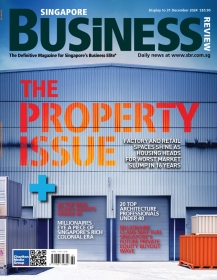
CIMB predicts telcos will shell out S$64m-S$145m for 4G spectrum
Find out about the new allocation framework.
According to CIMB, Singapore's 4G spectrum allocation framework lowers the already low likelihood of an intense bidding as it allocates more spectrum and lowers the spectrum cap to prevent hogging compared to its proposal.
As a result, the firm thinks the spectrum will be awarded at reserve price.
"We think that demand will be the strongest for the 1800MHz blocks given the better propagation qualities at this band vs 2.6GHz. As the auction poses little negative surprise, we maintain our view that StarHub will raise its quarterly dividends this year," CIMB said.
The Infocomm Development Authority (IDA) announced the allocation framework for 4G spectrum. It has: 1) placed 2x75MHz spectrum at the 1800MHz band and 2x60MHz at the 2.6GHz band; it added 2x5MHz at the 1800MHz band and 2x20MHz at the 2.6GHz band compared to its earlier proposal, 2) set a reserve price of S$16m per 2x5MHz block for the 1800MHz band and S$10m per 2x5MHz for the 2.6GHz band, and 3) imposed a lower cap of 2x30MHz for the 1800MHz band compared to its earlier proposal of 2x45MHz on the maximum amount of spectrum a telco can bid for.
This is to prevent spectrum-hogging by financially stronger players.
Here's more from CIMB:
We maintain our view that the spectrum will be awarded at the reserve price as there is ample spectrum. As a result, the auction does not change our view that StarHub will raise its dividends.
Adding more spectrum to the auction pool compared to its earlier proposal and lowering the cap on how much each bidder can bid lowers the already low likelihood of an intense bidding.
In addition, the auction is unlikely to attract new bidders because of the small and mature market. The 3G auctions in 2001 and 2010 were awarded at reserve price.
We estimate telcos to pay between S$64m (based on reserve price) and S$145m (based on a competitive bidding) for the spectrum.
























 Advertise
Advertise






